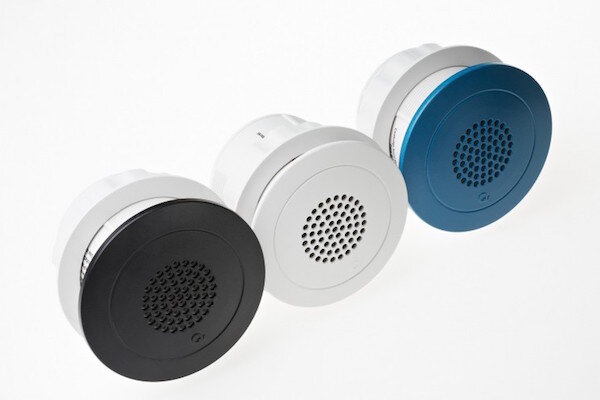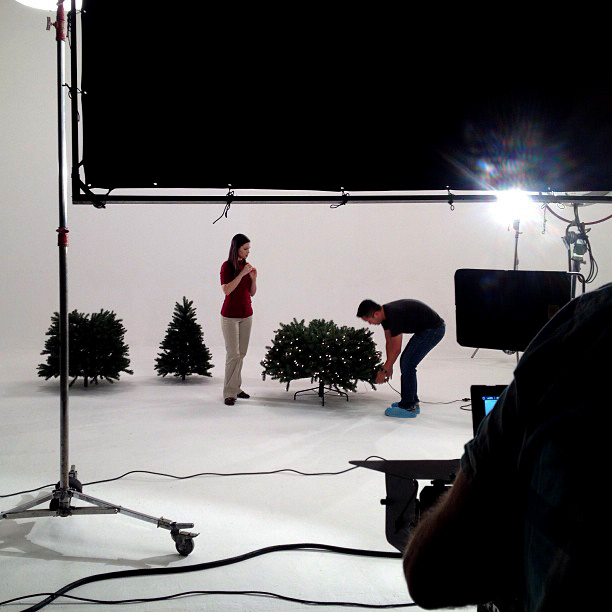Table of Contents

9 Great Location Scouting Tools & Tips for Corporate Video Productions
Get the most out of your next location scout:
Scout faster and increase your on-set confidence with productive location scouts. Location scouting is a critical step in pre-production. As the name implies, you are examining a potential filming location in detail. This step is not something you should skip or complete the day you arrive on set. Leaving such a monumental task for the morning of your shoot will bring stress and disorder that stifles creativity.
Here are our top 9 tips to use on your next location scout:
- Sun Tracking Apps – Where will the sun be?
- Tools to Find Your Shot Framing
- Locate Available Power & Circuit Breaker Location
- Find the HVAC Thermostat Control
- White Noise Machines are the Enemy
- Establish a Facilities Contact
- Look Out for Reflections
- Locate Light Switches
- Parking and Building Access
Sun Tracking Apps – Where will the sun be?
Knowing the sun’s position is a critical step with location scouting. The sun is incredibly bright and it can be both your friend or foe. You either need to manipulate it to illuminate your set or block it out completely to take over control with artificial lighting.
Scout your location at the same time of day in which you expect to be filming on your production day. Seeing where the sun is located will help you prepare to manage its intensity.
If the sun is low on the horizon and coming straight through the windows, you might need additional diffusion on-set to bring its intensity down for correct exposure. If the sun is high in the sky and casting a shadow into the interior, you might battle the sun less, but could also need more supplementary light to brighten the space.
To see where the sun will be, we recommend using apps like Helios or Sun Seeker. These apps let you use augmented reality to see where the sun will be each hour of the day. This way you can see where the sun will be throughout your video shoot.

Helios App

Sun Seeker App
Tools to Find Your Shot Framing
Although cameras are getting smaller and smaller, bringing your camera and lenses to a location scout is still cumbersome. It’s much more convenient to simulate your camera and lens combinations on an iPhone app.
I recommend Cadrage or Artemis Pro. These apps can mimic your sensor size, aspect ratio, and lens focal length. With these apps, you can take photos while simulating your camera to find your shot framing and for referencing later.
 Cadrage App simulating the field of view of a Alexa Mini in 3.2k and a 35mm lens
Cadrage App simulating the field of view of a Alexa Mini in 3.2k and a 35mm lensLocate Available Power & Circuit Breaker Location
Filming equipment can draw a lot of electricity to operate. On larger sets, your Grip & Electric (G&E) department will be responsible for managing power on-set, but for smaller crews, this responsibility could fall on you. If you are filming with only LED lights, you won’t need to worry too much about tripping a breaker, but it’s still possible. For this reason, ask your client where their circuit breaker is located in case you need to flip a breaker back on. I am not an electrician so please complete the adequate training to safely turn breakers on and off.

Always check for power outlets at your chosen filming locations. A common trick for G&E is to carry a receptacle tester and a non-contact voltage tester. These two devices can be used to check if a power outlet has power running to it. Checking for power can save you a lot of headaches before you start running stingers (extension cords) from outlets only to realize they are off.
Find the HVAC Thermostat Control
Keeping cool or warm on set is important, but eliminating the humming and drone from an HVAC system is even more important when recording dialogue. Office vents can be very loud which will disrupt the quality of your audio recordings. It’s important during your location scout to either find a thermostat that allows you to turn the system off or find a facilities manager who can turn it off for you during the production. I recommend only turning off the system right before you record.
White Noise Machines are the Enemy
HVAC units can be loud, but white noise machines are even louder. If you turn off an HVAC system and are still hearing background noise, it’s likely from a white noise machine. Most offices especially open floor plan ones have white noise machines. These machines help reduce the noise in an office caused by background chatter and phone calls.

You can spot noise machines by looking at the ceiling for small speakers. Speakers used for making announcements are usually large and about 10” in diameter while noise machines are smaller and closer to 5”. If you spot white noise machines, make sure to ask how you can turn them off. This usually stumps most facility management teams as they almost never have to turn the system off and the switch is not in an intuitive place. I’ve found switches for white noise machines in computer server rooms.
Establish a Facilities Contact
Work with your client to establish a facilities contact. The facilities manager who is on-site during your location scout may not be the same one on-site during your production. The facilities manager could also be the landlord or someone who is not on-site often. It’s important that this contact is aware of the shoot and what you might need their assistance with including:
- Turning off the white noise machine
- Turning off the A/C
- Assisting with power issues if a circuit is tripped
Often a client assumes they can manage all the issues that may occur during a shoot. However, when you start mentioning shutting off equipment, they are quick to agree that a facilities contact is necessary.
Look Out for Reflections
Modern offices have lots and lots of glass everywhere. When you are first walking through a location scout, the glass may feel insignificant and not relevant to your shoot. However, once you start setting up large softboxes and lights, you will find that they will visibly reflect in the glass behind your talent.

Glass can make the location you picked during your scout not work once you bring all your equipment in. The point of the location scout is to mitigate issues not create more issues by ignoring how difficult glass can be.
Locate Light Switches
Finding the light switch sounds incredibly obvious, but modern offices are now hiding them in hard-to-find places or they are controlled remotely through ipads and software.
Locating light switches can be easy to forget too when you are more focused on finding your shot than the overhead office lights. Overhead office lights can spill unwanted color into your shots and also emit unflattering light. Make sure to shut them off and use your lighting to illuminate the space.
Parking and Building Access
Some offices have a simple parking lot with a clearly visible main entrance, but large corporate campuses can have multiple parking locations and hidden service elevators. Make sure to check with your client where you should park, how to gain access to the building, and if there is a service/freight elevator to use.

It’s important to check these entails because not all employees have access to every part of their corporate campus. Your client may need a facilities manager to open locked doors that lead to a freight elevator. The last thing you want to happen is getting towed during a video shoot too.
Conclusion – Location Scouts are Worth Your Time
If this article demonstrates anything it’s that there are many variables to manage on a video production set. However, these variables are in your control as long as you use pre-production and location scouts to get ahead of problems.
Trying to find your shot at the same time that the grip van is being unloaded with crew asking you where to setup will not go well. Tripping the circuit breaker and not knowing how to get the power back on could cost you thousands of dollars in crew overage charges. It’s worth your time to mitigate problems before you arrive to film.

